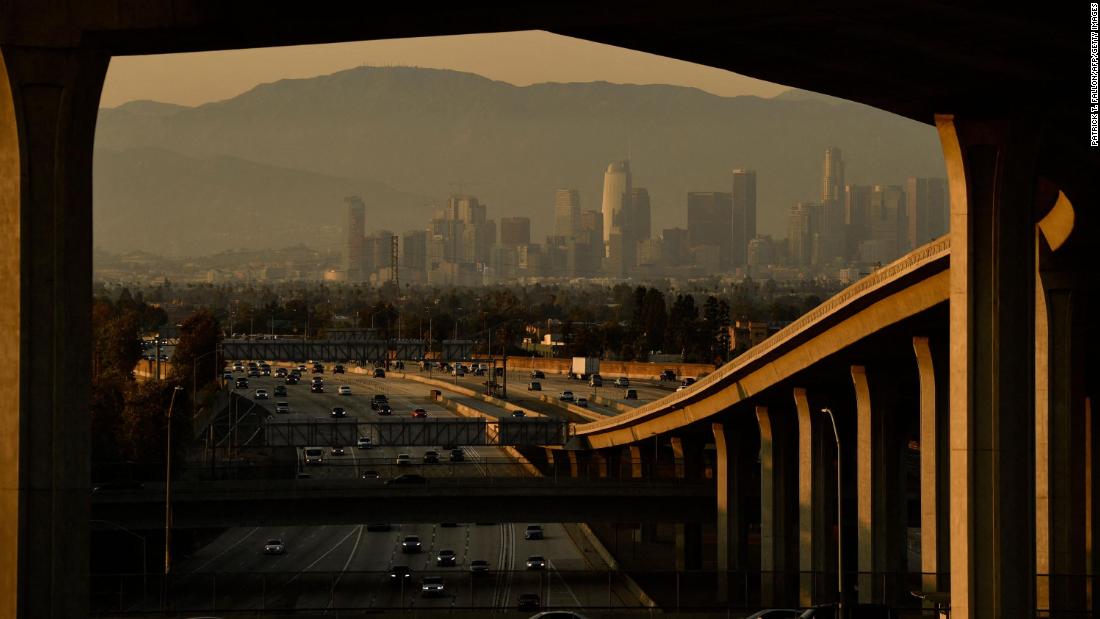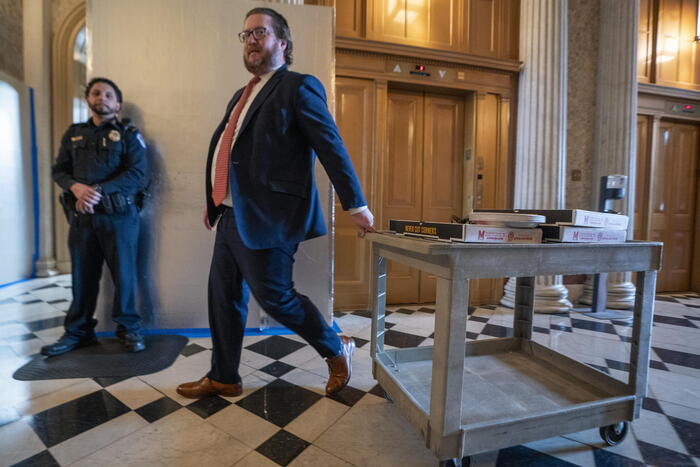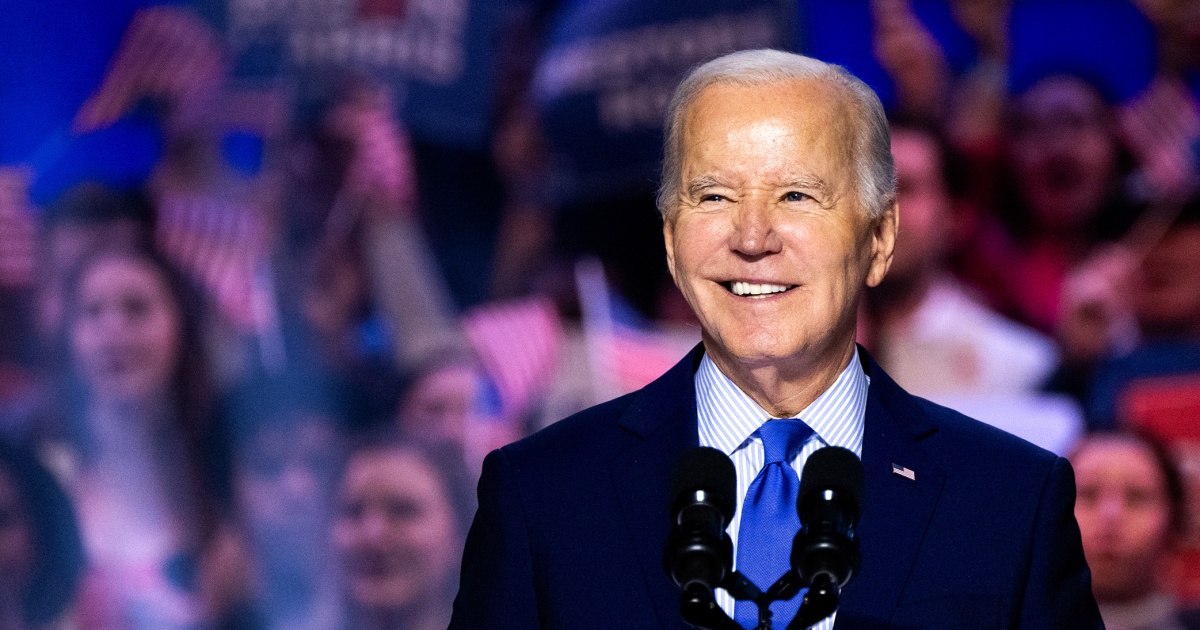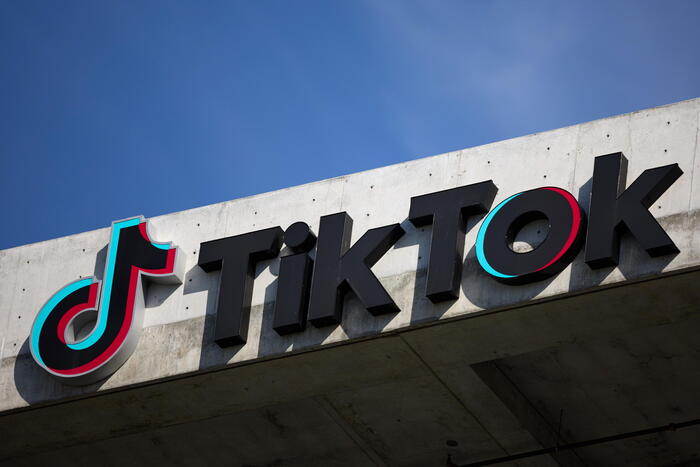Biden celebrates bipartisan agreement on infrastructure 2:28
(CNN) -
A bipartisan group of senators reached an agreement Wednesday on key points that had been holding back a huge infrastructure package for months of negotiations.
The full text of the bill has yet to be published, but in total, the deal includes $ 550 billion in new federal investments in America's infrastructure.
Yet it falls far short of the $ 2.25 trillion proposal that President Joe Biden unveiled in March.
That measure, known as the American Jobs Plan, included money for roads, bridges and public transportation, but drew criticism from many Republicans for also making investments in areas that were not traditionally considered infrastructure, such as caring for children. Older Americans and Workforce Training.
Still, Biden touted the new deal on Wednesday.
"This agreement makes key investments to put people to work across the country, in cities, small towns, rural communities, and on our coasts and plains," he said.
America desperately needs 1 million more construction workers
Changes can still be made before the bill is voted on.
The Senate could make amendments to the text and then it must be sent to the House for approval before heading to the president's desk.
advertising
Here's what we know so far about the latest version of the deal, according to a fact sheet provided by the White House:
Financing for roads and bridges
The deal seeks to invest $ 110 billion for roads, bridges and large infrastructure projects, roughly the same amount agreed to in the bipartisan bill in June, but significantly less than the $ 159 billion that Biden initially requested in the Employment Plan. U.S.
It includes $ 40 billion for bridge repair, replacement and rehabilitation, which the White House says would be the largest investment dedicated to a bridge since the construction of the interstate highway system, which began in the 1950s.
The agreement also contains $ 17.5 billion for major projects that would be too large or complex for traditional financing programs.
Some 20%, or 280,000 km, of the country's highways and main roads are in poor condition, as are 45,000 bridges, according to the White House.
Investments would focus on climate change mitigation, resilience, equity and safety for all users, including cyclists and pedestrians.
Also included in the package is $ 11 billion for transportation safety, including a program to help states and localities reduce crashes and fatalities, especially of bicyclists and pedestrians.
It would direct the funds to safety initiatives on roads, cranes and pipelines and hazardous materials.
And it contains $ 1 billion to reconnect communities, disproportionately black neighborhoods, that were divided by roads and other infrastructure.
It will finance the planning, design, demolition and reconstruction of street networks, parks or other infrastructure.
ANALYSIS |
Everything is getting more expensive.
Is it time to worry?
Money for transit and railways
The package would provide $ 39 billion to modernize public transportation and improve accessibility for the elderly and disabled, less than the $ 49 billion contained in the previous bipartisan agreement and the $ 85 billion that Biden initially wanted to invest in modernizing the transit systems and help them expand to meet passenger demand.
The funds would repair and upgrade existing infrastructure, make stations accessible to all users, bring transit service to new communities, and modernize train and bus fleets, including replacing thousands of vehicles with zero-emission models.
The deal would also invest $ 66 billion in railways to eliminate Amtrak's maintenance backlog, modernize the Northeast Corridor line, and bring rail service to areas outside of the Northeast and Mid-Atlantic regions.
The package includes $ 12 billion in partnership grants for intercity rail service, including high-speed rail.
The funding is the same as under the bipartisan framework, but less than the $ 80 billion that Biden originally wanted to send to Amtrak, which he relied on for decades to return to Delaware from Washington.
It would be the largest federal investment in public transportation in history and in passenger trains since Amtrak was created 50 years ago, according to the White House.
Broadband upgrade
The bill would provide a $ 65 billion investment to improve the nation's broadband infrastructure, ensuring that all Americans have access to high-speed Internet.
Biden initially wanted to invest $ 100 billion in broadband.
It also aims to help lower the price households pay for Internet service by requiring recipients of federal funds to offer an affordable low-cost plan, creating price transparency, and driving competition in areas where existing providers they do not provide adequate service.
It would also create a permanent federal program to help more low-income households access the Internet, according to the White House fact sheet.
Biden will address the intelligence community for the first time as president
Improvement of airports, ports and waterways
The deal would invest $ 17 billion in port infrastructure and $ 25 billion in airports to address delays in repairs and maintenance, reduce congestion and emissions near ports and airports, and promote electrification and other low-carbon technologies.
It is similar to the funding of the bipartisan agreement and Biden's original proposal.
Electric vehicles
The bill would provide $ 7.5 billion for zero- and low-emission buses and ferries, with the goal of delivering thousands of electric school buses to districts across the country.
Another US $ 7.5 billion would be used to build a national network of plug-in electric vehicle chargers.
Improvement of energy and water systems
The bill would invest $ 73 billion in the nation's energy fabric, to build thousands of miles of new power lines and expand renewable energy.
It would provide $ 55 billion to improve water infrastructure, replacing lead service lines and pipes so that communities have access to clean drinking water.
Another $ 50 billion would go towards making the system more resilient, protecting it from droughts, floods and cyberattacks.
Environmental remediation
The bill would provide $ 21 billion to clean up the Superfund and Brownfield sites, reclaim abandoned mining lands and plug orphan gas wells.
Expert explains why we are increasingly exposed to a cyber attack
How Congress Will Pay It
The fact sheet provided by the White House did not include many details on how the expenses would be paid.
He said that some unspent covid relief funds would be redirected towards the infrastructure bill.
In addition, it would implement some specific fees for corporate users and raise money by strengthening the application of taxes on cryptocurrencies.
Biden said in a statement that the bill will not increase taxes on people who earn less than $ 400,000 a year and does not include an increase in gasoline taxes or a levy on electric vehicles.
infrastructure


/cloudfront-eu-central-1.images.arcpublishing.com/prisa/RULPYNDV5FMFMTRM6OUNH3K3BY.jpg)






